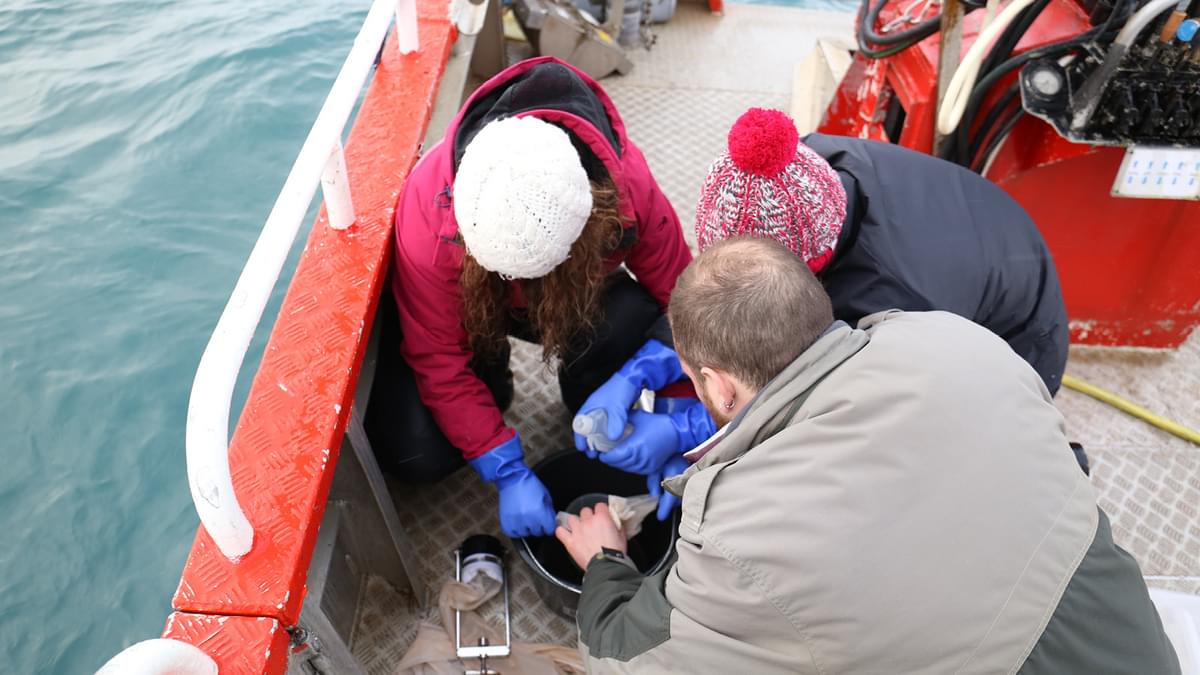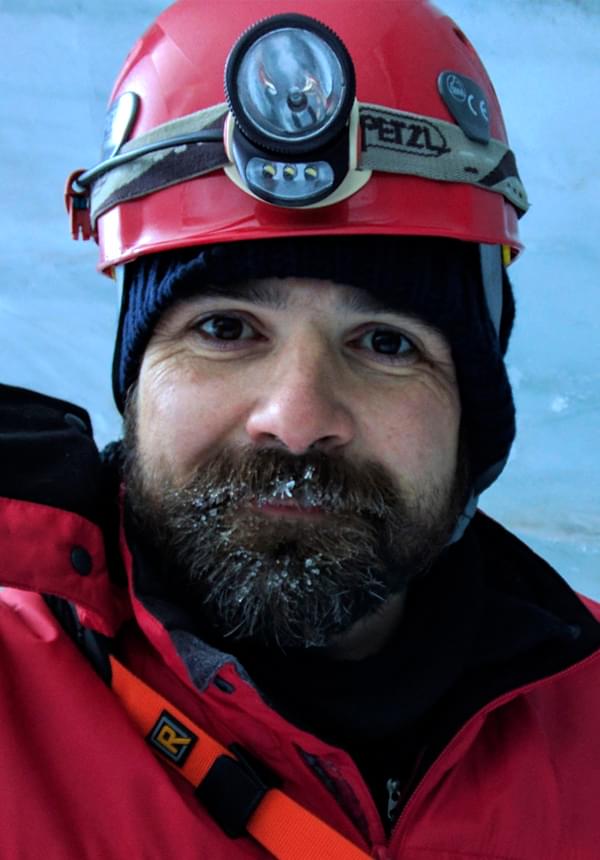
Sampling for microplastics
This investigation is a great way of learning about how extensive the issue of microplastics is. Scientists have already identified microplastics in the Arctic, but how much is there? Students will consider how to appropriately answer this question by considering sampling techniques needed to conduct a fair test.
This activity mirrors the scientific investigation of algal content in ice core samples conducted during the Catlin Arctic Survey 2011 and highlights the scientific thinking of scientists studying microplastics on the AXA Arctic Live Expedition 2019.
Researchers are currently trying to measure the quantity of microplastics in ecosystems such as the Arctic. However, because of limitations, such as time and money, they must carefully plan how to appropriately sample and report their findings.
There were technical issues with this live broadcast. These sometimes occur due to the nature of our locations. Please visit this alternative lesson filmed on the same day.
Preparation
Print Microplastics Sampling Student Sheet (or Advanced version depending on ability of students), one per student. Both these Student Sheets can be found in the What you'll need section for this activity.
Arrange students into groups, organise all resources needed for experiment, found here.
You will need to create trays of ice with simulated ‘microplastics’ to represent a ‘region of the Arctic’. Your students will be challenged to sample and quantify the amount of ‘microplastics’ in that ‘region of the Arctic sea ice’. To make these ‘regions of the Arctic’, freeze a known amount of lentils or rice in brine water (about 30g salt per litre of water) in flat containers, such as baking / roasting trays. Fill the trays to about 5cm in height and consider distributing the ‘microplastics’ unevenly through the tray to make accurate sampling more of a challenge for your students. Don’t forget to record the amount of ‘microplastics’ (either number of pieces or grams) that you used in each tray, which can be the same or different for each group again to challenge your students. Be mindful that salty water will take a lot longer to freeze, so consider prepping your trays two days or more in advance.
Session steps
1. Introduction (5 mins)
Jamie will open the session with a welcome and brief introduction to the expedition and any shout-outs to registered classes.
During this time students to get into their allocated groups and set up their experiments.
2. Subject knowledge (5 mins)
Jamie will then proceed to speak about the emergence of microplastics in the environment and the importance of working scientifically to better understand where these microplastics are and what impact they may have on whole ecosystems.
Jamie will focus on why coming up with an appropriate sampling strategy is important and discuss factors to consider to obtain the most accurate results.
3. Activity time (25 mins)
Students will be challenged to design their sampling strategy and think of ways to separate microplastics from ice samples, which can be thought of as impure mixtures.
Jamie will demonstrate a method to separate the ‘microplastics’ from the ice and how they will record their findings using a data table.
Student groups will have time to conduct the steps as demonstrated and record their results. There are two versions of the steps both found in the What you'll need section for this activity. The first protocol asks students to count pieces of microplastics and the more advanced protocol ask your students to measure mass.
Jamie will discuss his findings and the importance of replicates within an experiment and replication of experiments for accuracy and peer review as well as understanding of long-term effects on ecosystems including biomagnification of toxins in food webs.
4. Q&A and conclusion (10 mins)
After completing the activity Jamie will be able to answer pre-submitted questions and take part in the live chat. At the end of the broadcast, Jamie will suggest some other activities you might like to try and what's coming up in the rest of Arctic Live 2019.
Speakers

Jamie Buchanan-Dunlop
Executive Director, Encounter Edu
Brought to you by



With the support of




Sampling for microplastics
This investigation is a great way of learning about how extensive the issue of microplastics is. Scientists have already identified microplastics in the Arctic, but how much is there? Students will consider how to appropriately answer this question by considering sampling techniques needed to conduct a fair test.
This activity mirrors the scientific investigation of algal content in ice core samples conducted during the Catlin Arctic Survey 2011 and highlights the scientific thinking of scientists studying microplastics on the AXA Arctic Live Expedition 2019.
Researchers are currently trying to measure the quantity of microplastics in ecosystems such as the Arctic. However, because of limitations, such as time and money, they must carefully plan how to appropriately sample and report their findings.
There were technical issues with this live broadcast. These sometimes occur due to the nature of our locations. Please visit this alternative lesson filmed on the same day.
Preparation
Print Microplastics Sampling Student Sheet (or Advanced version depending on ability of students), one per student. Both these Student Sheets can be found in the What you'll need section for this activity.
Arrange students into groups, organise all resources needed for experiment, found here.
You will need to create trays of ice with simulated ‘microplastics’ to represent a ‘region of the Arctic’. Your students will be challenged to sample and quantify the amount of ‘microplastics’ in that ‘region of the Arctic sea ice’. To make these ‘regions of the Arctic’, freeze a known amount of lentils or rice in brine water (about 30g salt per litre of water) in flat containers, such as baking / roasting trays. Fill the trays to about 5cm in height and consider distributing the ‘microplastics’ unevenly through the tray to make accurate sampling more of a challenge for your students. Don’t forget to record the amount of ‘microplastics’ (either number of pieces or grams) that you used in each tray, which can be the same or different for each group again to challenge your students. Be mindful that salty water will take a lot longer to freeze, so consider prepping your trays two days or more in advance.
Session steps
1. Introduction (5 mins)
Jamie will open the session with a welcome and brief introduction to the expedition and any shout-outs to registered classes.
During this time students to get into their allocated groups and set up their experiments.
2. Subject knowledge (5 mins)
Jamie will then proceed to speak about the emergence of microplastics in the environment and the importance of working scientifically to better understand where these microplastics are and what impact they may have on whole ecosystems.
Jamie will focus on why coming up with an appropriate sampling strategy is important and discuss factors to consider to obtain the most accurate results.
3. Activity time (25 mins)
Students will be challenged to design their sampling strategy and think of ways to separate microplastics from ice samples, which can be thought of as impure mixtures.
Jamie will demonstrate a method to separate the ‘microplastics’ from the ice and how they will record their findings using a data table.
Student groups will have time to conduct the steps as demonstrated and record their results. There are two versions of the steps both found in the What you'll need section for this activity. The first protocol asks students to count pieces of microplastics and the more advanced protocol ask your students to measure mass.
Jamie will discuss his findings and the importance of replicates within an experiment and replication of experiments for accuracy and peer review as well as understanding of long-term effects on ecosystems including biomagnification of toxins in food webs.
4. Q&A and conclusion (10 mins)
After completing the activity Jamie will be able to answer pre-submitted questions and take part in the live chat. At the end of the broadcast, Jamie will suggest some other activities you might like to try and what's coming up in the rest of Arctic Live 2019.
Speakers

Jamie Buchanan-Dunlop
Executive Director, Encounter Edu
Brought to you by



With the support of





